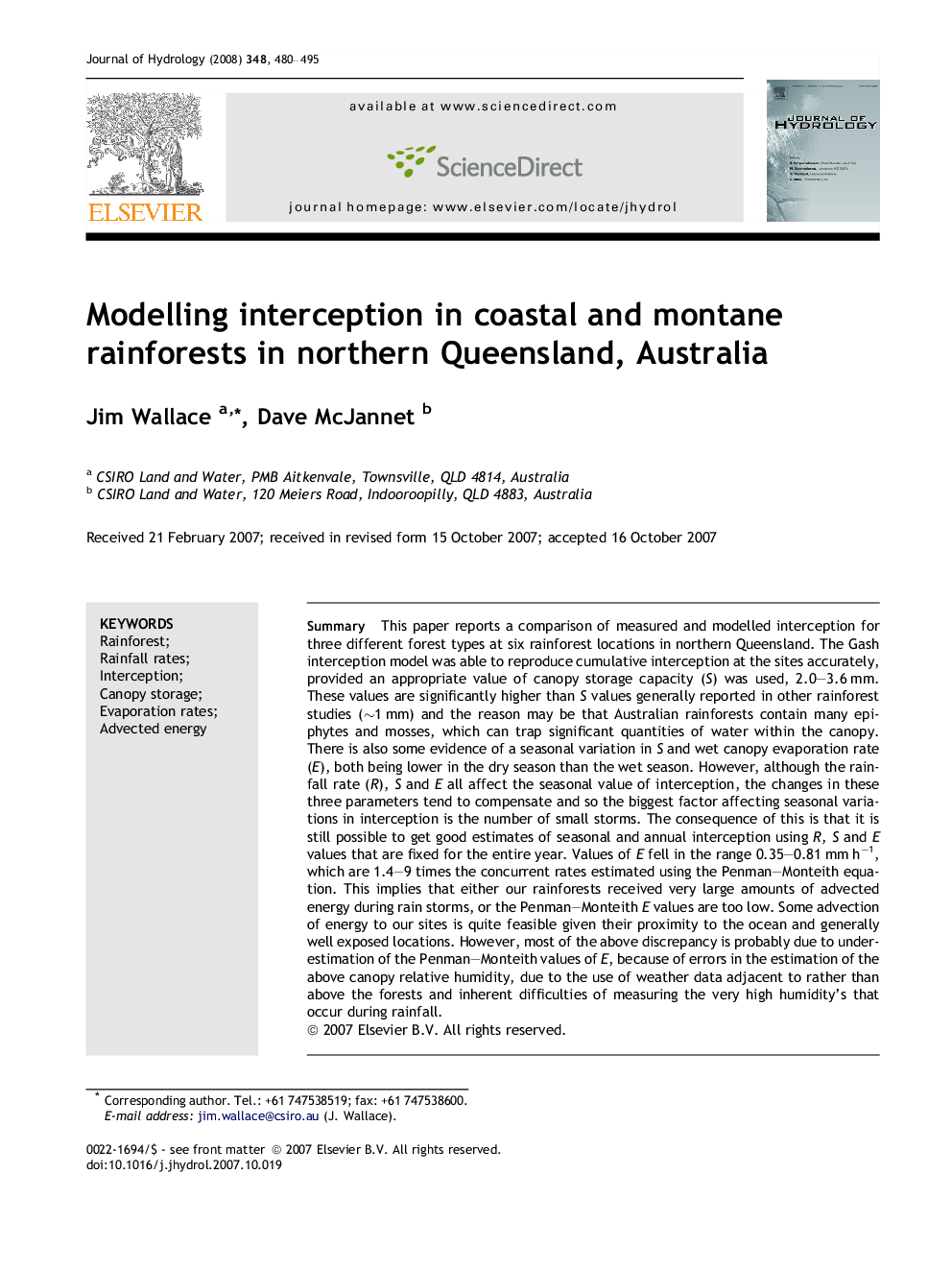| Article ID | Journal | Published Year | Pages | File Type |
|---|---|---|---|---|
| 4579714 | Journal of Hydrology | 2008 | 16 Pages |
SummaryThis paper reports a comparison of measured and modelled interception for three different forest types at six rainforest locations in northern Queensland. The Gash interception model was able to reproduce cumulative interception at the sites accurately, provided an appropriate value of canopy storage capacity (S) was used, 2.0–3.6 mm. These values are significantly higher than S values generally reported in other rainforest studies (∼1 mm) and the reason may be that Australian rainforests contain many epiphytes and mosses, which can trap significant quantities of water within the canopy. There is also some evidence of a seasonal variation in S and wet canopy evaporation rate (E), both being lower in the dry season than the wet season. However, although the rainfall rate (R), S and E all affect the seasonal value of interception, the changes in these three parameters tend to compensate and so the biggest factor affecting seasonal variations in interception is the number of small storms. The consequence of this is that it is still possible to get good estimates of seasonal and annual interception using R, S and E values that are fixed for the entire year. Values of E fell in the range 0.35–0.81 mm h−1, which are 1.4–9 times the concurrent rates estimated using the Penman–Monteith equation. This implies that either our rainforests received very large amounts of advected energy during rain storms, or the Penman–Monteith E values are too low. Some advection of energy to our sites is quite feasible given their proximity to the ocean and generally well exposed locations. However, most of the above discrepancy is probably due to underestimation of the Penman–Monteith values of E, because of errors in the estimation of the above canopy relative humidity, due to the use of weather data adjacent to rather than above the forests and inherent difficulties of measuring the very high humidity’s that occur during rainfall.
